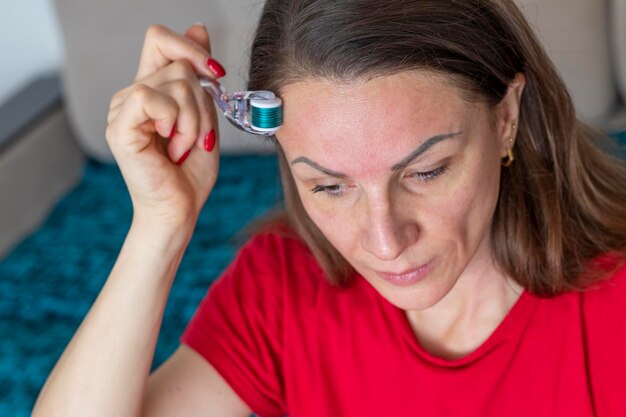Understanding Secondary Cataracts: How Often Can They Occur?
When cataracts cloud your vision, solutions like cataract surgery promise clarity. However, some people experience another hurdle: secondary cataracts. This article navigates the complexities of secondary cataracts, offering insights that combine depth with practical understanding. Let's delve into whether you can encounter secondary cataracts more than once and what that entails for your eye health journey.
🌟 What is a Secondary Cataract?
A secondary cataract, also known as posterior capsule opacification (PCO), is a common condition that can occur after cataract surgery. Although the original cataract is effectively removed and replaced with a clear artificial lens, the membrane (or capsule) that holds the new lens can become clouded. This clouding impedes vision, much like the initial cataract did.
Why Do They Happen?
- Cataract surgery involves removing the cloudy lens and implanting an intraocular lens (IOL).
- The natural lens casing, or capsule, is left intact to hold the new lens in place.
- Over time, cells from the lens capsule can proliferate, leading to cloudiness or opacification.
This process can vary from one individual to another, influenced by factors like age, health, and the type of intraocular lens used.
🧐 Can You Get Secondary Cataracts Multiple Times?
The primary concern for many patients is the recurrence of this issue. Here's the breakdown:
Initial Occurrence:
- Secondary cataracts can develop anywhere from a few weeks to several years post-surgery. It's relatively common, affecting a significant proportion of cataract surgery patients.
Treatment with YAG Laser Capsulotomy:
- The go-to treatment is a non-invasive, quick procedure known as YAG laser capsulotomy. This laser removes the cloudiness by creating an opening in the cloudy capsule.
Multiple Occurrences:
- Once treated with YAG laser, it's uncommon for secondary cataracts to recur. This is because the part of the capsule that becomes cloudy is permanently altered, preventing further opacification.
Factors That Might Affect Recurrence
While recurrence after a YAG laser treatment is rare, the initial development of a secondary cataract can be influenced by several factors:
- Age: Younger cataract patients may have a higher likelihood of initial secondary cataract formation.
- Medical Conditions: Conditions like diabetes can increase the risk.
- Surgical Variations: Techniques and the type of lens used during the initial surgery can play a role.
🔎 Identifying Secondary Cataracts: Symptoms and Diagnosis
Recognizing a secondary cataract involves being attentive to changes in your vision. Here are symptoms to watch for:
- Blurred or cloudy vision similar to your original cataract
- Increased glare from lights
- Trouble with night vision
- Double vision in the affected eye
Seeking Professional Evaluation
If symptoms arise, scheduling an eye examination with an eye care specialist is crucial to confirm if a secondary cataract is present and discuss potential treatment options.
🛠️ Treatment Pathway: What to Expect
YAG Laser Capsulotomy Process
This procedure is straightforward and typically involves:
- A quick outpatient visit
- No incisions or lengthy recovery period
- Immediate recovery of vision for many patients
Procedure Steps:
- The eye is dilated using eye drops.
- A special laser is used to create a small opening in the cloudy capsule.
- Vision typically clears up rapidly following the treatment.
Post-Procedure Care
Post-treatment, patients are generally advised to:
- Use prescribed anti-inflammatory eye drops
- Monitor for any unusual symptoms, such as increased floaters or flashes of light
- Attend follow-up appointments as suggested by their eye care professional
🤔 Navigating Life with and After Cataract Issues
While secondary cataracts can be an inconvenience, they are manageable with effective treatment options available. Understanding the likelihood of encountering such conditions and preparing for their management is key to maintaining clear vision.
Lifestyle and Eye Health
To minimize eye health issues:
- Ensure regular eye check-ups
- Protect eyes from UV light exposure by wearing sunglasses
- Manage chronic health conditions that could impact eye health
👓 Quick Reference: Key Takeaways About Secondary Cataracts
Here is a quick summary for easy reference:
| 📝 Takeaway | 🌟 Details |
|---|---|
| Definition | Secondary cataract is clouding of the lens capsule post cataract surgery. |
| Initial Treatment | YAG laser capsulotomy is the standard remedy. |
| Recurrence | Rare after YAG laser treatment; first secondary cataract can develop weeks to years post-surgery. |
| Symptoms | Blurred vision, glare sensitivity, poor night vision. |
| Prevention & Management | Regular eye exams, managing health conditions, protecting eyes from UV. |
🌿 Closing Insight: Prioritizing Your Vision
The journey through cataract surgery and the potential development of secondary cataracts emphasizes the importance of prioritizing eye health. Whether you're managing initial cataract symptoms, navigating post-surgical scenarios, or simply staying informed, understanding your eyes aids in clearer, more assured living. Proactively engaging with your eye care professional and embracing healthy lifestyle choices cultivates lifelong visual wellness.
